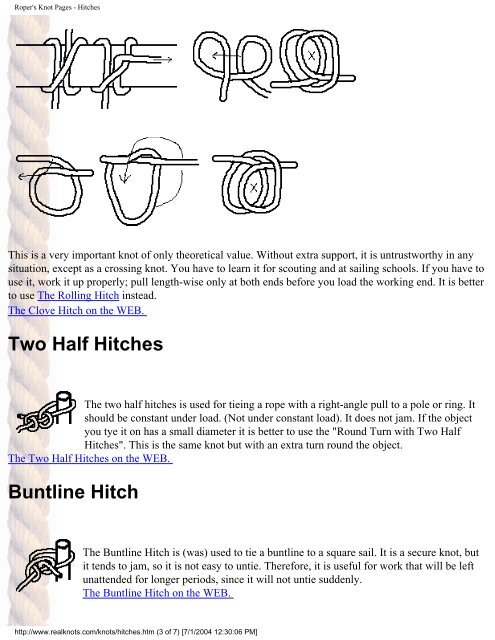Real Knots - Pole Shift Survival Information
Real Knots - Pole Shift Survival Information
Real Knots - Pole Shift Survival Information
You also want an ePaper? Increase the reach of your titles
YUMPU automatically turns print PDFs into web optimized ePapers that Google loves.
Roper's Knot Pages - Hitches<br />
This is a very important knot of only theoretical value. Without extra support, it is untrustworthy in any<br />
situation, except as a crossing knot. You have to learn it for scouting and at sailing schools. If you have to<br />
use it, work it up properly; pull length-wise only at both ends before you load the working end. It is better<br />
to use The Rolling Hitch instead.<br />
The Clove Hitch on the WEB.<br />
Two Half Hitches<br />
The two half hitches is used for tieing a rope with a right-angle pull to a pole or ring. It<br />
should be constant under load. (Not under constant load). It does not jam. If the object<br />
you tye it on has a small diameter it is better to use the "Round Turn with Two Half<br />
Hitches". This is the same knot but with an extra turn round the object.<br />
The Two Half Hitches on the WEB.<br />
Buntline Hitch<br />
The Buntline Hitch is (was) used to tie a buntline to a square sail. It is a secure knot, but<br />
it tends to jam, so it is not easy to untie. Therefore, it is useful for work that will be left<br />
unattended for longer periods, since it will not untie suddenly.<br />
The Buntline Hitch on the WEB.<br />
http://www.realknots.com/knots/hitches.htm (3 of 7) [7/1/2004 12:30:06 PM]

















